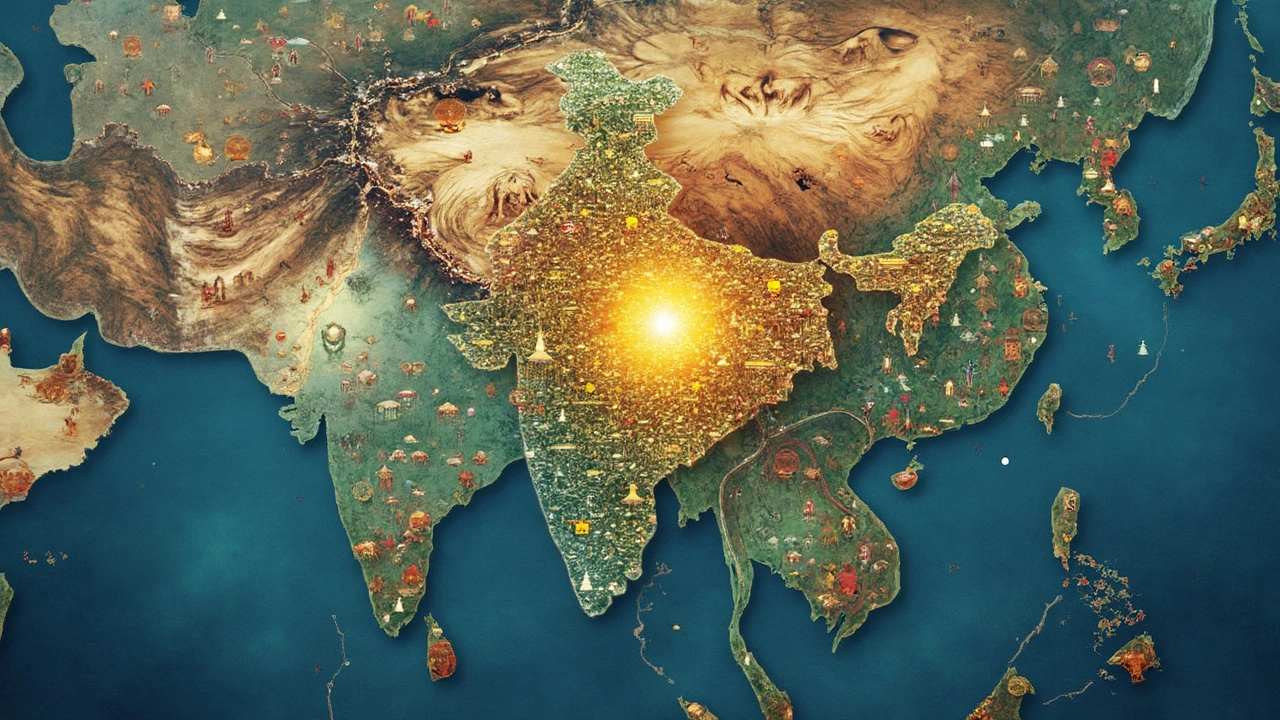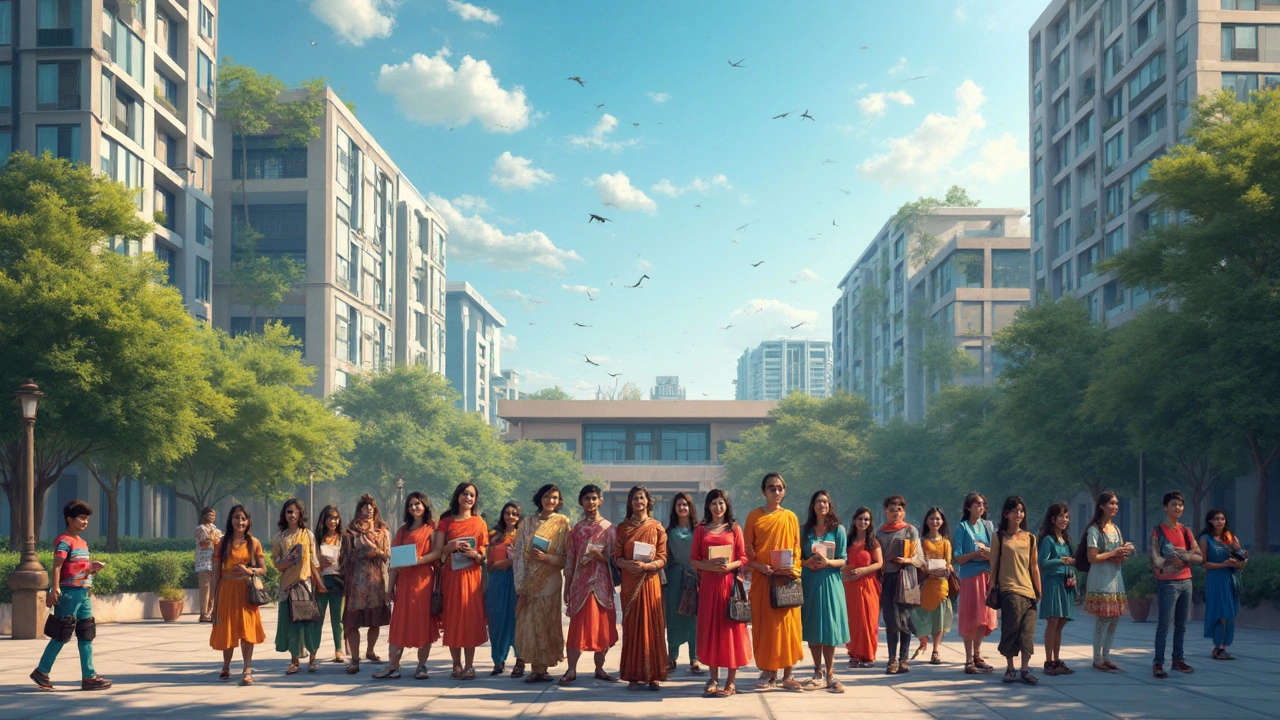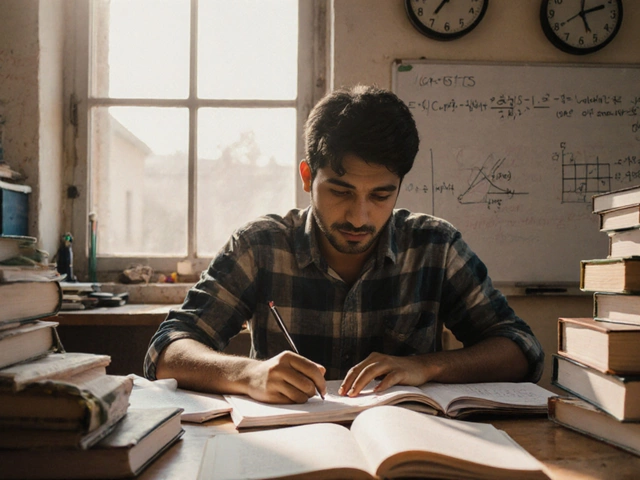You're probably curious about where the most CBSE schools are in India. If you're a parent considering the CBSE curriculum for your child's education, this info could be a game-changer. Turns out, Uttar Pradesh takes the lead with the highest number of CBSE schools! This makes sense because it's the most populous state, so naturally, it has to cater to a huge number of students.
But it's not just about the headcount. States like Delhi and Maharashtra also have a significant number of CBSE schools, thanks to their urban centers and emphasis on quality education. These places offer top-notch facilities and experienced teachers, making them popular choices among parents.
One factor driving up these numbers is the growing demand for a standardized curriculum across India. Families love CBSE for its balanced mix of academics and extracurriculars, along with its nationwide recognition. So, when you're out there comparing schools, think about what matters most to you and your child. Is it the quality of education, proximity to home, or maybe the available sports facilities? Knowing which state leads in CBSE schools is just the start. The final choice is all yours!
- Understanding CBSE and Its Importance
- Analyzing School Distribution
- Top States with CBSE Schools
- Interesting Facts About Leading States
- Factors Influencing CBSE School Numbers
- Tips for Choosing a CBSE School
Understanding CBSE and Its Importance
The Central Board of Secondary Education (CBSE) is one of India's most recognized national-level educational boards. Established by the Government of India in 1962, CBSE aims to provide a standardized and high-quality education system across the country.
CBSE schools use a curriculum that emphasizes a balanced mix of academics and extracurricular activities, ensuring students develop both intellectually and personally. This approach not only helps in building a strong foundation in core subjects like Math, Science, and English but also encourages kids to explore their talents in sports, arts, and other areas.
Why Choose CBSE?
Choosing a CBSE-affiliated school comes with several benefits. For starters, their syllabus is comprehensive and is often used as the basis for many competitive exams, like IIT-JEE, NEET, and more, making it a popular choice for families aiming for higher education success. Plus, being a national board, CBSE's curriculum is designed to be uniform across all affiliated schools, so if you're moving to a different state, the transition is usually seamless.
Another perk? Most CBSE textbooks, particularly those from NCERT, are well-structured, focusing on a clear understanding of concepts. This is crucial for keeping students engaged and helping them grasp lessons more effectively. The board also continuously updates its syllabus to keep it relevant in today’s fast-changing world.
The Numbers Game: Schools and Exams
The board has exponentially grown over the years. As of 2023, over 25,000 schools in India and abroad are affiliated with CBSE, catering to more than 20 million students. It annually conducts the Class 10 and 12 examinations, which are crucial benchmarks in a student’s academic journey.
If you’re considering CBSE for your child, think about what the board offers: a solid educational framework, lots of subject choices, and a good prep base for future studies. It’s no surprise that CBSE schools are a preferred choice for so many families across India.
Analyzing School Distribution
When you delve into CBSE schools distribution across India, it's like piecing together a gigantic puzzle. Where you find more schools often says a lot about the region. Let's dig into what you should know.
Numbers Game
There's no denying that Uttar Pradesh takes the cake with the most number of CBSE schools. With its massive population, it needs plenty of educational institutions to keep up. According to the latest data, UP houses over 5,000 CBSE-affiliated schools. It's a testament to how demand meets supply here.
Meanwhile, Maharashtra and Delhi are not far behind. Maharashtra boasts around 3,500 CBSE schools, while Delhi hosts about 1,200. These figures aren't just numbers; they represent the states' commitment to meeting a high standard of education.
Urban vs. Rural Divide
In urban areas, like Mumbai and Delhi, the concentration of CBSE schools is higher compared to rural regions. Why? Urban centers have better infrastructure and more affluent families willing to pay for quality education. In rural areas, though, schools might be fewer and far between, but efforts are underway to bridge this gap.
Impact of Population and Economics
States with larger populations naturally need more schools, but it's not just about numbers. The economic status of a region plays a huge role. More economically developed states tend to have better facilities, attracting parents who prioritize educational quality. For instance, Tamil Nadu and Karnataka, being economically vibrant, host over 1,000 CBSE schools each.
| State | Number of CBSE Schools |
|---|---|
| Uttar Pradesh | 5,000+ |
| Maharashtra | 3,500+ |
| Delhi | 1,200+ |
| Tamil Nadu | 1,000+ |
| Karnataka | 1,000+ |
So, when thinking about school distribution, consider what these numbers hint about the state's educational policy and economic priorities. It’s fascinating how these factors create such varied educative landscapes.
Top States with CBSE Schools
So, you're wondering which states in India have the most CBSE schools? Let's dive into that. This will be especially useful if you're considering relocating or just curious about educational trends across the country.
Uttar Pradesh: The Undisputed Leader
With its vast population and expansive geography, Uttar Pradesh tops the list in terms of the number of CBSE schools. The state is home to both urban hubs and rural areas that demand a standardized educational framework. Schools here offer a mix of traditional academic courses and progressive teaching methods, attracting a diverse student body.
Delhi: The Educational Powerhouse
As the capital city, Delhi's reputation for quality education is well-known. It's not just the quantity but the quality of schools that shines. The curriculum is comprehensive, integrating holistic development with academics. Plus, the competitive environment and advanced infrastructure make Delhi a go-to for CBSE education seekers.
Maharashtra: A Rich Mix of Cultures and Education
Maharashtra, with its bustling cities like Mumbai and Pune, ranks high in CBSE school numbers. The state's focus on modern amenities and extracurricular programs complements its academic rigor. It's a popular choice for parents who want more than just bookish knowledge for their kids.
| State | Number of CBSE Schools |
|---|---|
| Uttar Pradesh | 18,000+ |
| Delhi | 2,000+ |
| Maharashtra | 5,000+ |
These states offer varied yet stable environments for quality CBSE education. While Uttar Pradesh provides more options, Delhi and Maharashtra stand out for their educational innovation. Depending on what you're looking for, these states could be your best bet for securing a solid CBSE education.

Interesting Facts About Leading States
When it comes to the number of CBSE schools, some states stand out for unique reasons. Let's dive into what makes these states tick.
Uttar Pradesh: The Front-Runner
As India's most populous state, Uttar Pradesh obviously leads the charge. Here's a fun fact: apart from numbers, UP also focuses on teacher training programs to maintain the quality of education, ensuring consistent standards across its schools.
Delhi: Quality Over Quantity
Although not as large in size, Delhi punches above its weight. It boasts numerous schools with world-class facilities. Parents here are particularly drawn to schools offering international exposure alongside the CBSE syllabus.
Maharashtra: The Educated Giant
Maharashtra, with its mix of urban and rural landscapes, has a strong educational infrastructure. Cities like Mumbai and Pune have been leaders in adopting new teaching technologies, keeping their CBSE schools ahead of the curve.
Here’s a Quick Snapshot
| State | Number of CBSE Schools |
|---|---|
| Uttar Pradesh | More than 6,000 |
| Delhi | Over 1,500 |
| Maharashtra | Nearly 3,000 |
These states show that having a large number of schools is one thing, but focusing on quality and innovative teaching methods can set a state apart.
Factors Influencing CBSE School Numbers
Wondering why some states have more CBSE schools than others? Well, it boils down to a mix of population, demand for quality education, and the urbanization level. Let's dig into these factors.
Population and Student Numbers
Larger states naturally have more schools simply because of the sheer number of students. Uttar Pradesh, for instance, has a massive population, so it's no surprise it's packed with CBSE schools. More students mean more demand for good schools that offer a standardized curriculum like the CBSE.
Demand for Quality Education
In urban centers like Delhi and Mumbai, parents are keen on ensuring their kids get a high-quality education. CBSE offers a curriculum that many view as rigorous and well-rounded, making it a preferred choice. Schools respond to this demand by affiliating with the CBSE board, ensuring they're on parents' radars.
Urbanization and Accessibility
Urbanized states tend to have a better infrastructure for education, making it easier to establish and maintain schools. The ease of access to resources and facilities plays a big part. Plus, cities often attract more professionals looking to enroll their kids in reputable schools.
Interestingly, not just existing demand but also the potential for growth influences the number of schools. In states where the education sector is booming, you're more likely to see a spike in schools adapting to the CBSE curriculum.
| State | CBSE Schools Count |
|---|---|
| Uttar Pradesh | 4,500 |
| Delhi | 2,500 |
| Maharashtra | 2,300 |
These numbers paint a picture of how different factors shape the CBSE school landscape across India. Whether you're looking at sheer numbers or considering quality and accessibility, understanding these factors can help you make informed decisions when choosing the right school for your child.
Tips for Choosing a CBSE School
Picking the right CBSE school for your kid can feel a bit overwhelming with so many choices out there. But don't worry, we've got some straightforward tips to help you out!
1. Location and Accessibility
First things first, consider the school's location. Is it easy for your child to commute? Having a school close to home saves a lot of time and energy. Plus, being nearby means you'll be more involved in school activities and meetings.
2. Curriculum and Extracurricular Activities
CBSE schools follow a standardized curriculum, but it's also important to see what extracurriculars they offer. Activities like sports, arts, and music can be crucial for well-rounded development. Check if the school has clubs your child can join.
3. Faculty and Facilities
Teachers can make or break a school experience. Look into the faculty's qualifications and experience. Good schools often boast experienced teachers who understand CBSE's nuances. Also, take a tour of the school's facilities. Is the library well-stocked? Are the labs equipped?
4. Reputation and Results
Your research should include a look into the school's reputation. How has the school performed in CBSE board exams? Talk to other parents if you can. High pass percentages and alumni success stories can say a lot.
5. Budget
Affordability is key. Make sure the fees align with your budget not just for this year, but for the foreseeable future. Some schools might have hidden costs for excursions or extracurriculars, so ask about those too.
| Factor | Importance Level |
|---|---|
| Location | High |
| Faculty | High |
| Extracurriculars | Medium |
| Results | High |
| Budget | Medium |
Following these tips, you'll be well on your way to picking the best CBSE school that fits your child's needs and your family's logistics!





